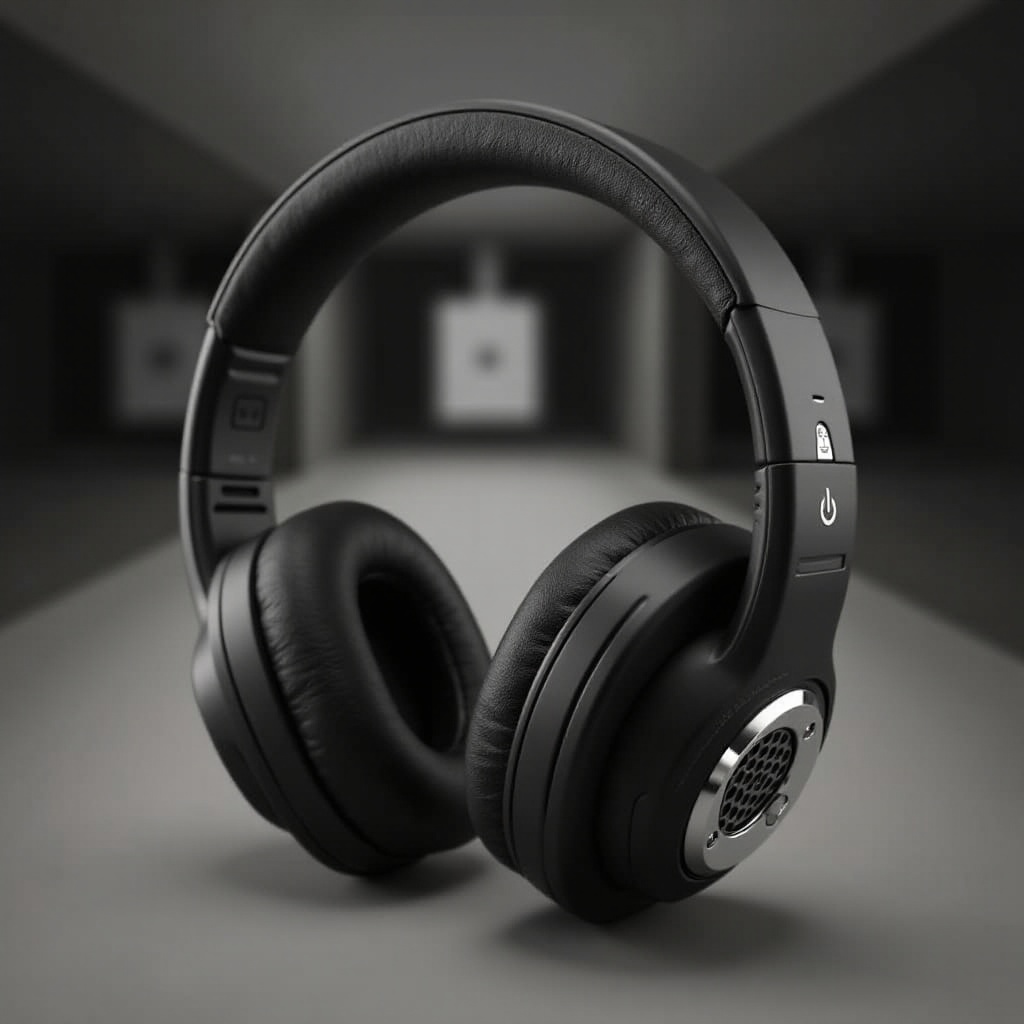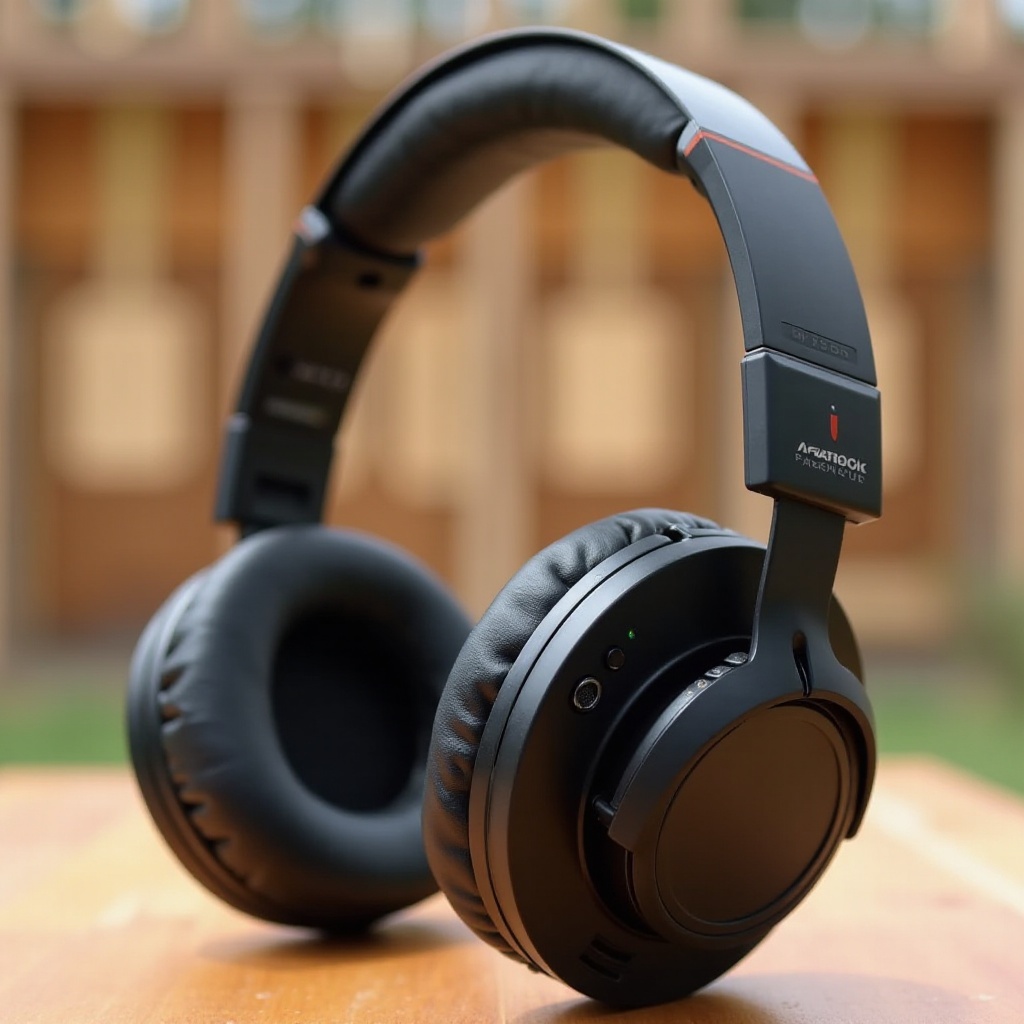
Introduction
When visiting a shooting range, the importance of protecting your hearing cannot be overstated. The sound of gunfire can be extremely loud and potentially damaging to your ears. Noise canceling Bluetooth headphones provide the perfect solution by offering protection against high decibel sounds and seamless connectivity to your devices. This guide delves into the myriad benefits of using these headphones at shooting ranges, how the noise cancelation technology works, top recommendations for 2024, key features you should look for, and essential maintenance tips. By the end of this guide, you will be well-equipped to make an informed decision on the best noise canceling Bluetooth headphones for your needs.

Why You Need Noise Canceling Bluetooth Headphones at the Shooting Range
The loud report of firearms can cause significant damage to your hearing if not properly managed. Hearing protection is a must at shooting ranges, and noise canceling Bluetooth headphones offer a dual advantage: they shield your ears from harmful noise levels and provide Bluetooth connectivity for an improved experience.
- Hearing Protection: The primary function of noise canceling headphones at a shooting range is to protect your ears from the deafening sound of gunfire. Prolonged exposure to such high decibel levels can lead to permanent hearing loss.
- Enhanced Communication: With Bluetooth functionality, these headphones allow you to stay connected to your devices. You can easily take calls or listen to instructions without the need to remove your protective gear.
- Comfort and Concentration: High-quality noise canceling headphones offer a snug fit and noise isolation. This ensures you’re comfortable during prolonged use and can maintain focus without distractions.
Investing in noise canceling Bluetooth headphones for the shooting range is not just about protecting your hearing, but also about enhancing your overall shooting experience.
How Noise Cancelation Technology Works
Understanding how noise cancelation technology works can help you appreciate its importance.
Active noise cancelation (ANC) technology uses microphones placed inside and outside the headphones to monitor ambient noise. The headphones then generate soundwaves that are the exact negative (anti-phase) of the ambient noise, effectively canceling it out.
Passive noise cancelation, on the other hand, involves the physical blocking of sound waves. This is achieved through the use of soundproof materials that can dampen external noises.
Combining both active and passive noise cancelation approaches provides the most effective hearing protection in environments like shooting ranges, where loud, sharp noises are frequent.

Top 5 Noise Canceling Bluetooth Headphones for Shooting Ranges in 2024
As we look into 2024, here are the top five noise canceling Bluetooth headphones designed for shooting ranges:
Model 1: Features and Pros/Cons
Features:
– High NRR (Noise Reduction Rating) of 31 dB
– Long battery life of up to 20 hours
– Comfortable over-ear design
– Advanced ANC technology with dual microphones
Pros:
– Exceptional noise cancelation
– Durable and comfortable for long periods
Cons:
– Higher price point
Model 2: Features and Pros/Cons
Features:
– NRR of 29 dB
– Built-in voice assistant
– Lightweight and adjustable headband
– Bluetooth 5.0 connectivity for seamless pairing
Pros:
– Convenient voice controls
– Reliable connectivity
Cons:
– Slightly less effective noise reduction
Model 3: Features and Pros/Cons
Features:
– NRR of 32 dB
– Sweat-resistant design
– Quick charge feature
– Integrated volume controls
Pros:
– Ideal for outdoor ranges
– Quick power-up time
Cons:
– Controls can be a bit fiddly
Model 4: Features and Pros/Cons
Features:
– NRR of 30 dB
– Memory foam ear cups
– Multi-device pairing
– Premium sound quality
Pros:
– Excellent fit and comfort
– High-definition audio
Cons:
– Bulkier design
Model 5: Features and Pros/Cons
Features:
– NRR of 28 dB
– Compact and foldable design
– Noise-canceling microphone for clearer calls
– Extra bass feature
Pros:
– Easy to store and transport
– Enhanced bass for music lovers
Cons:
– Lower NRR compared to other models
Key Features to Look for When Buying
Choosing the right pair involves considering several factors to suit your needs.
Noise Reduction Rating (NRR)
NRR is a measure of how much noise reduction a headphone can provide. The higher the NRR, the better protection it offers. For shooting ranges, aim for a minimum NRR of 28 dB, but higher is preferable.
Battery Life
Battery life is crucial to ensure your headphones last throughout your shooting session. Look for models that offer at least 15 hours of battery life on a full charge. Some models also come with quick charge features.
Comfort and Fit
Comfort is vital, especially if you spend long hours at the range. Look for headphones with adjustable headbands, cushioned ear pads, and an overall ergonomic design. Memory foam ear cups can provide an additional level of comfort and a better seal.
Bluetooth Connectivity
Ensure your headphones have reliable Bluetooth connectivity. Bluetooth 5.0 and above is recommended for the best performance, signal range, and lowest latency. Multi-device pairing can also be beneficial, allowing you to switch between devices effortlessly.

Maintenance and Care Tips
To extend the life of your noise canceling Bluetooth headphones, regular maintenance is necessary.
- Clean Regularly: Wipe down the ear pads and headband with a damp cloth after each use to remove sweat and dirt.
- Store Properly: Use a hard case when not in use to protect them from physical damage.
- Check for Firmware Updates: Some models may offer firmware updates. Make sure your headphones have the latest software for optimal performance.
- Battery Care: Charge your headphones as per the manufacturer’s instructions. Avoid letting the battery drain completely before recharging.
By following these steps, your headphones will last longer and continue to perform at their best.
Conclusion
Noise canceling Bluetooth headphones are a critical investment for anyone who spends time at a shooting range. They combine hearing protection with modern connectivity, enhancing both safety and convenience. Considering factors like NRR, battery life, comfort, and Bluetooth features can help you choose the best pair for your needs.
Frequently Asked Questions
Can I use regular Bluetooth headphones at the shooting range?
No, regular Bluetooth headphones are not designed to handle the extreme noise levels at shooting ranges. Using them could result in inadequate protection and potential hearing damage. Always opt for headphones specifically designed for noise reduction and safety in such environments.
How often should I replace my noise canceling headphones for the shooting range?
While this depends on frequency of use and the care they receive, a good rule of thumb is to replace your headphones every 2-3 years. Regularly check the ear cups and seals for any signs of wear and tear, and replace them if they no longer provide a good seal.
What is the difference between active and passive noise canceling?
Active noise canceling (ANC) involves electronic processing to create anti-noise soundwaves that cancel out ambient noise. Passive noise canceling, however, uses physical materials to block out noise. The best headphones for shooting ranges often combine both methods for optimal noise reduction.
